This delicious, flavorful and saltless Tuscan Bread, or Pane Toscano will have you coming back for more. It has a crunchy and crispy crust and a soft, airy crumb and it's delicious with soups, sauces and bruschetta.
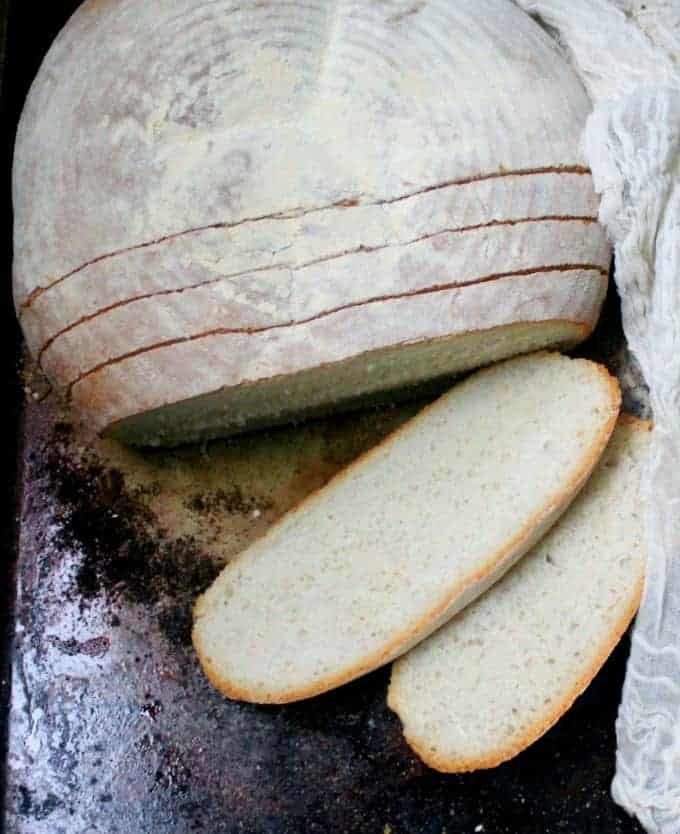
Of all the breads I make, this classic bread from Tuscany, called Pane Toscano, is one of my favorites.
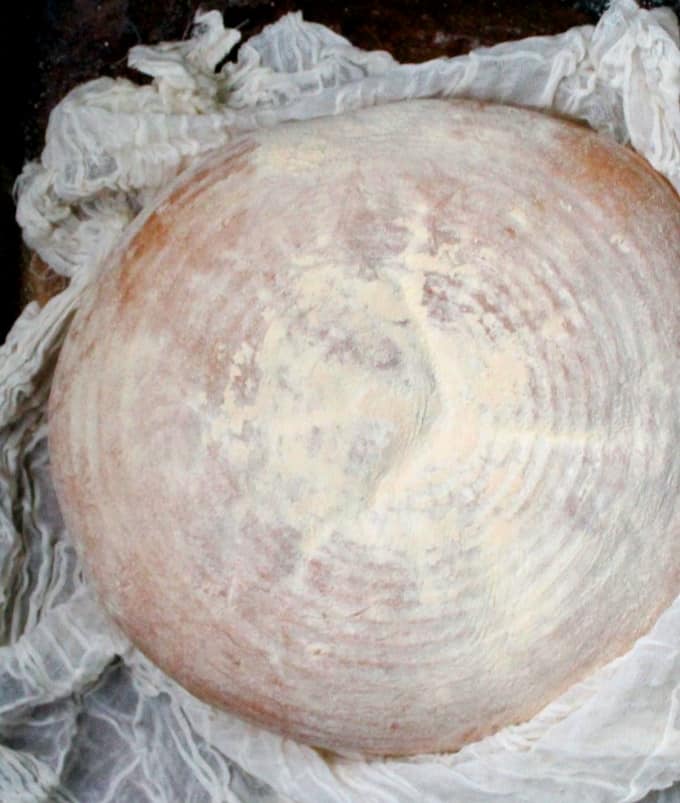
It's probably the bread I make most frequently in my kitchen, even more than sourdough bread, and the reasons are obvious: a crisp but not heavy crust and a soft, pillowy crumb, which makes it perfect for dunking it into soups or sauces. It is also the perfect bread to make bruschetta or smear with some vegan pesto, if you have a mind to.
What makes the process of making this bread a little different is that it starts out with a biga, a starter that's kinda like a sourdough starter on speed.
The biga is made with flour, water and yeast, and you start it the previous night, let it stand and ferment a bit overnight, and then make a dough with it the next morning. So if you've been wanting to make a sourdough starter and have been sitting on the fence about it, this is a good one to begin with.
But to be clear, a biga is not a sourdough starter: it has lots of flavor, but not the deep, rich flavor of sourdough, developed over days and months and years. It has added yeast, unlike sourdough which uses natural yeast seduced from the atmosphere. Also a dough made with biga will rise much faster than a dough made with sourdough starter alone.
Because the biga needs eight hours to develop, I'd advise starting on this bread the evening before if you plan to have it for lunch the next day, or rather early in the morning if you want it in time for dinner.
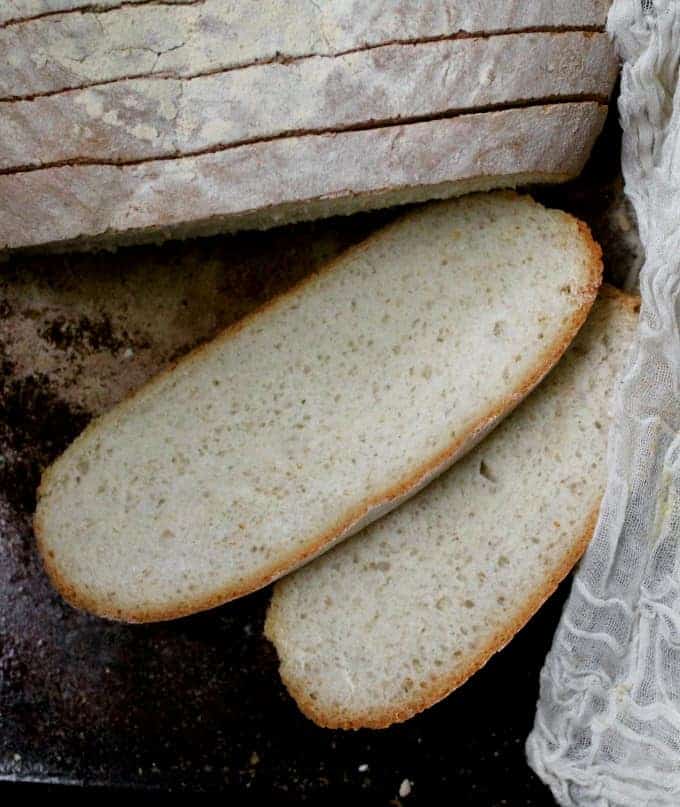
Tips and Tricks for making the perfect Pane Toscano:
- Give it time. This is not a bread to make in a rush because you want all of that wonderful flavor. So remember to make your biga or starter the night before, and give it time to bubble up and ferment in a warm place.
- A Tuscan bread is saltless -- all the better to scoop up flavorful sauces and soups with, or use for bruschetta. If you absolutely want salt in here, add a teaspoon or two, depending on your taste, when you knead the dough.
- You can make this dough with all purpose flour, as I did this time, or you can add in a cup of whole wheat flour for a little more complexity and flavor. When I use whole wheat flour, I add it the night before, to the biga.
- Your dough should be smooth and soft, not firm, but it should not be sticky. So when you're kneading it, if it starts sticking to the bowl or your hands, make sure you add some flour, but not too much.
- This is a freeform bread, and I usually shape it up into a boule and let it rise on a baking sheet. The resulting loaf is huge, so if you want to separate it into two loaves, that would work too. Or shape it into a long loaf, like a batard.
- I recently got a banneton basket and wanted to see how this bread would rise in it, so I used it when I last made this bread. It shaped up quite nicely, rings and all.
- That said, I made one mistake when I proofed the bread in the banneton. I didn't feel like spoiling that beautiful design by scoring the bread, which I usually do. Not a good idea, because the gases in the fermented biga need to escape and as a result my banneton loaf ended up cracking at the base. It still looked beautiful, though, and came out quite perfect taste- and texture-wise. Even so, a reminder to score that bread!
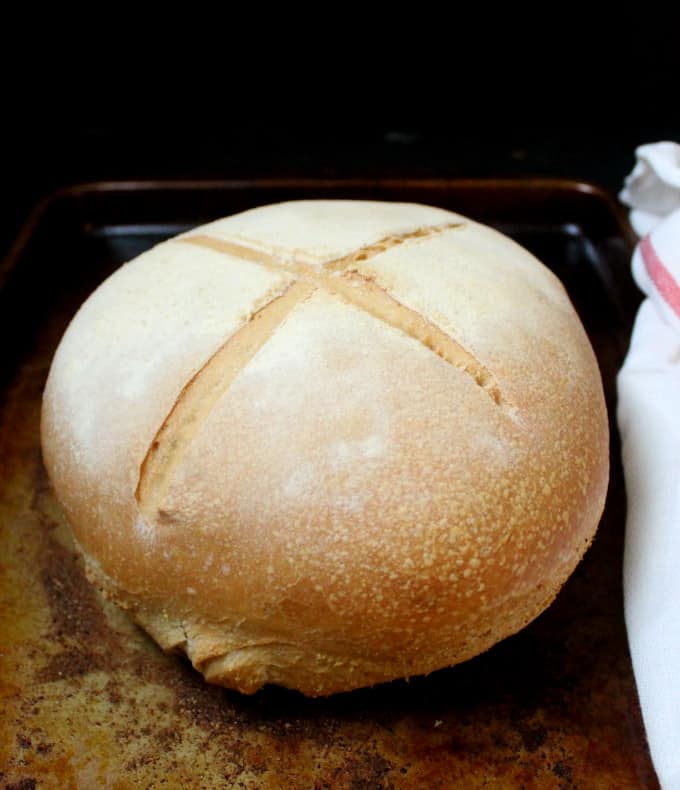
Looking for more vegan bread recipes?
- Easy Vegan Naan
- No Knead Sourdough Bread
- Soft Sourdough Rolls
- Crusty Sourdough Rolls, no knead and no added yeast
- All Whole Wheat Burger Buns
Tuscan Bread (Pane Toscano) Recipe:
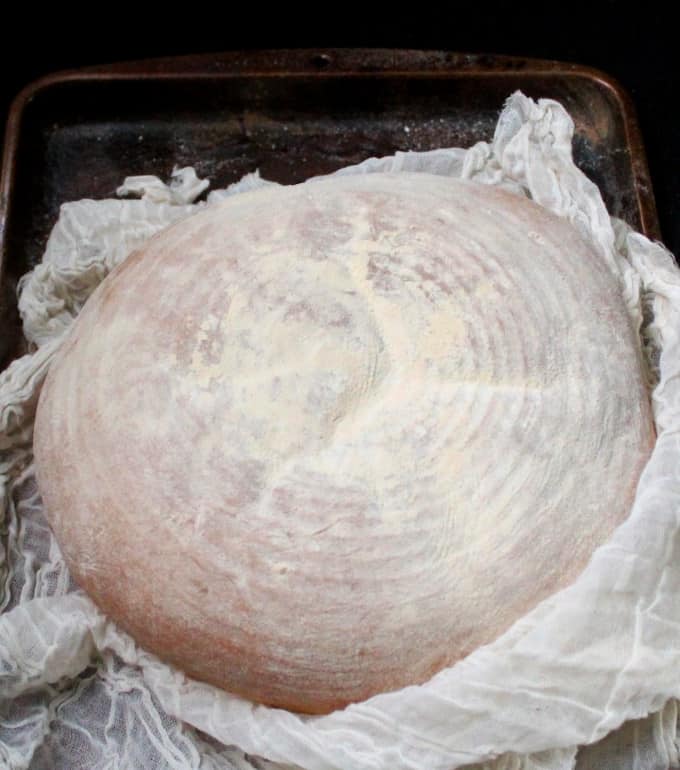
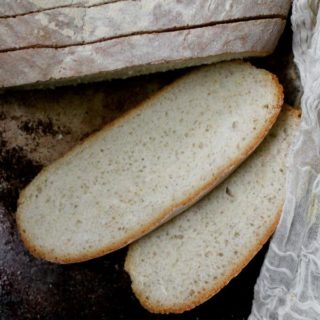
Tuscan bread (Pane Toscano)
Equipment
- Stand mixer or bowl
- Banneton (optional)
Ingredients
- 2 teaspoon active dry yeast
- 2 cups lukewarm water
- 5-6 cups unbleached all purpose flour
- 1 tablespoon extra virgin olive oil
Instructions
- Bloom the yeast and water in a large bowl for five minutes. Then add in 1 ¾ths cup flour and mix by hand or in a stand mixer. Cover and set aside to rise in a warm place, about 8 hours or overnight.
- Add 3 cups flour and knead until a smooth but soft dough forms. It should come off the sides of the bowl and shouldn't feel sticky. Knead in the olive oil and continue kneading in the stand mixer for eight minutes, with the speed set to medium, or by hand for 10-15 minutes. Add flour, a little at a time, if the dough starts sticking to the bottom of the pan while kneading.
- Place the dough in an oil-coated bowl, cover with a kitchen towel, and set aside for two hours or until it's doubled.
- Lightly oil a baking sheet and cover it with some cornmeal or semolina. This will make it easier to slide the loaf off the baking sheet.
- Punch down the dough and shape it into a round by pulling on the sides and tucking them underneath. You can either set the loaf to rise on a baking sheet or, if you have a banneton, place it inside the banneton, smooth side down, to rise. Cover the dough loosely with a shower cap or, if it's rising on the baking sheet, sprinkle some flour on top to prevent it from sticking and cover with a kitchen towel. Let the dough rise another 1 ½ hours or until the loaf has doubled in size.
- About half an hour before baking, heat the oven to 425 degrees. Place a small, ovenproof pan in the lowest rack of the oven.
- With a sharp knife or a serrated knife, make two quick gashes, like a cross, on the top of the loaf, taking care not to deflate it.
- Place the bread into the preheated oven, and immediately add a cup of water to the ovenproof pan you'd already placed in the lowest rack of the oven.
- Bake the bread for 40 minutes. Remove from the oven and place the loaf on a rack to cool.
- After the bread has cooled, slice with a serrated knife.
Nutrition
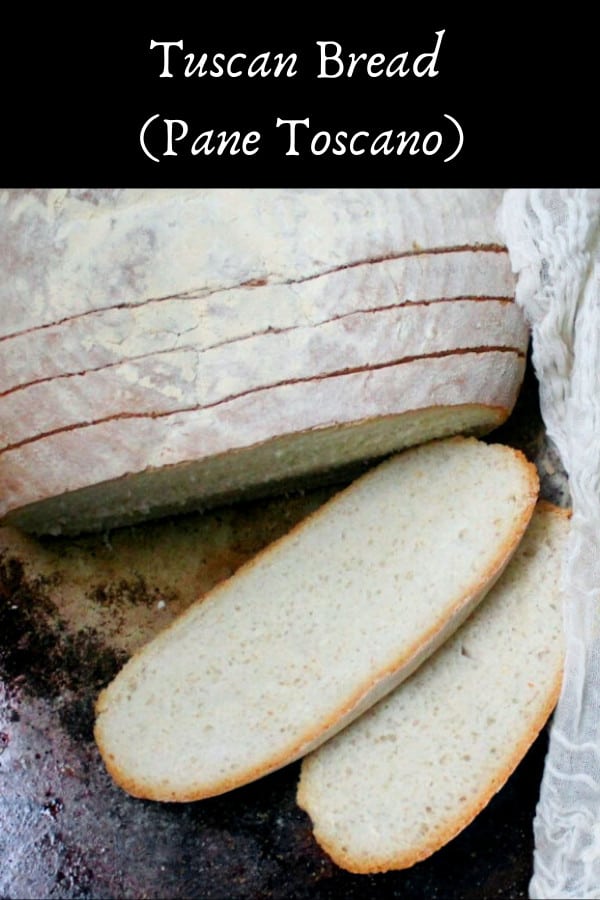

CooKING
Can this be made with other flours such as whole wheat or multigrain wheat?
Vaishali
Hi, there is some whole wheat in this recipe but making it all whole wheat would end up making the bread very dense. If you bake with sourdough you could attempt adding some sourdough to the bread dough to make it lighter, perhaps.
gerald
I am wondering (as i ponder making your bread recipe) whether I can substitute instant yeast for active dry yeast ALSO whether I can us bread flour instead of regular flour. These are the ingredients I have on hand and so I would like to proceed without going out to the grocer.
Gerald
I went ahead with this recipe swapping out the active dry yeast for instant. Instead of 2 TBSP I used 1 1/2 TBSP. I cut the first rise time in half (4 hrs instead of 8 hrs). The second and third rises I followed the recipe.
I used the remaining 1 C all purpose flour I had in my pantry and the rest was a bread flour.
The bread was fantastic....really really fantastic!
Gerald
I went ahead and made the bread without going to the grocers. Here's what I did (changed) and It was a spectacular success.
I substituted 1 1/2 tsp instant yeast for the 2 tsp active dry yeast.
I cut the first 8 hr rise time in half. 4 hrs instead of 8 hrs.
The second and third rises were as per the recipe (2 hrs and 1 1/2 hrs respectively)
I used about 1 cup of all purpose flour-as that is what i had on hand-the remaining flour was a white Bread flour.
Oh yeah i couldn't make this recipe without salt.
the bread was spectacular.
Crusty outside, soft inside....delicious
Floria
My dad's on a low-salt diet so I've been looking for salt-free bread recipes. Thank you for posting this one! It worked very well and has a lovely texture.
Kaali
Can this recipe be made using sourdough starter - with or without using the dry active yeast? If so what adjustments would I have to make to your wonderful recipe?
Thanks Vaishali!
Elizabeth Gabrielli
Is it usual I had to add quite a bit of flour after kneading in the olive oil? I added it tablespoon at a time, but probably ended up adding 15-20 tablespoons. I'm afraid it'll make it too heavy. But the Dough was very sticky before I did that. Even after all the flour, it was still slightly tacky.
Vaishali
That should be fine.
Alma I Reed-Herrera
So easy and perfect!/
Natalie
I made this bread to go with my pappa al pomodoro. It was incredible. I have never made homemade bread before. This recipe was easy to follow and it brought me back to Castellina in Chianti. Thank you for taking the time to post this recipe! It is going in my ricettario!
Mary theresa Boudreau
can all your recipes eliminate the oil ? I am on an oil free program
Vaishali
You can use the water saute method in many recipes, but I'd not recommend removing the oil in baked recipes where it adds moisture unless the recipe is oil-free.
Vaishali Honawar
Yes, you could absolutely use a pizza stone and the crust would be great.
Anonymous
I'm wondering if you could use a pizza stone to bake the bread on instead of a baking sheet? Or would that make the crust too crunchy?
Rebecca
How can I make this gluten free?
Vaishali Honawar
Rebecca, You could use a gluten-free flour mix.
Vaishali
Madhu, no the bread goes on a baking sheet and the pie plate is kept on a separate, lower rack of the oven. The intention in adding the water to the pie plate is to create a steamy atmosphere for the bread to bake in. The bread will at no time actually touch the water.
Hope that helps 🙂
Madhu
hi vaishali,
been going through your blog for the past few days.... i came across this recipe and looks very tempting... but i was not sure about this part of the recipe..."Now place the bread into the preheated oven, and immediately add a cup of water to the pie plate/cake pan you'd already placed in the lowest rack of the oven." .... do u place the bread into the pie plate and then add water to it?? or r they 2 seperate things in the oven ?? pls do let me know how this works!Thanks!!
Binwii
Thanks a lot for the very quick response Vaishali...I'm going to make this on the weekend and will definitely let you know how it came out, however I do have a feeling its gonna come out GREAT!!.
Thanks,
Bindu
Arundathi
Looks gorgeous, Vaishali. Love the golden crust!
DEESHA
I still ahvent started baking bread yet .. this one sure was a daunting task .. looks gorgeous
Priya
Vaishali! I just blogged about a Tuscan recipe to use up left over bread, I called it Rustic Bread salad!! This is the second time that our dishes have coincided this month :))